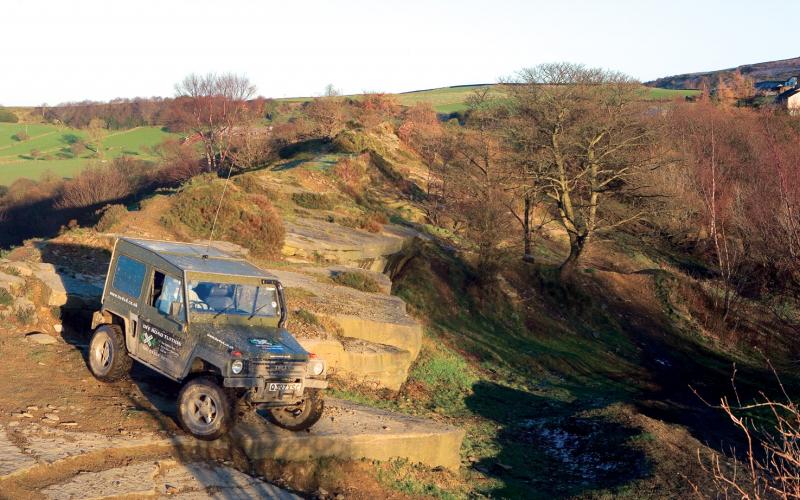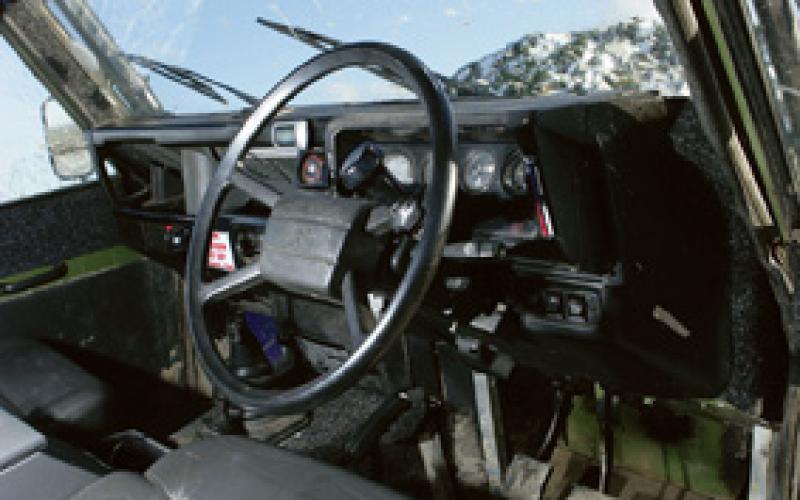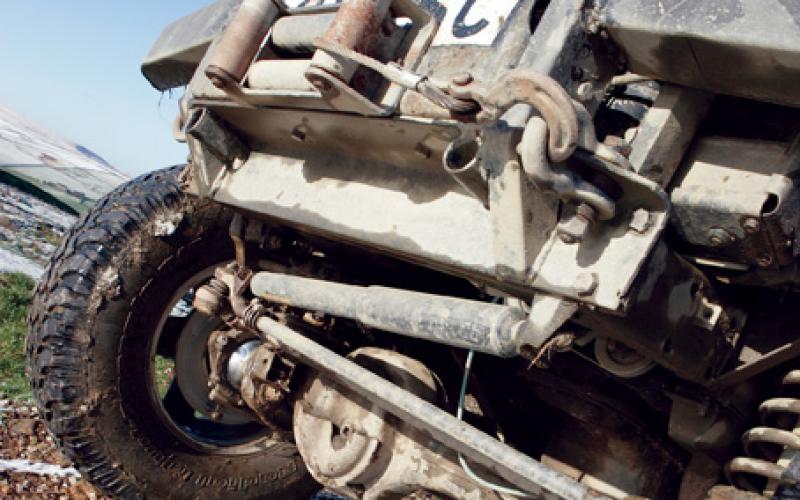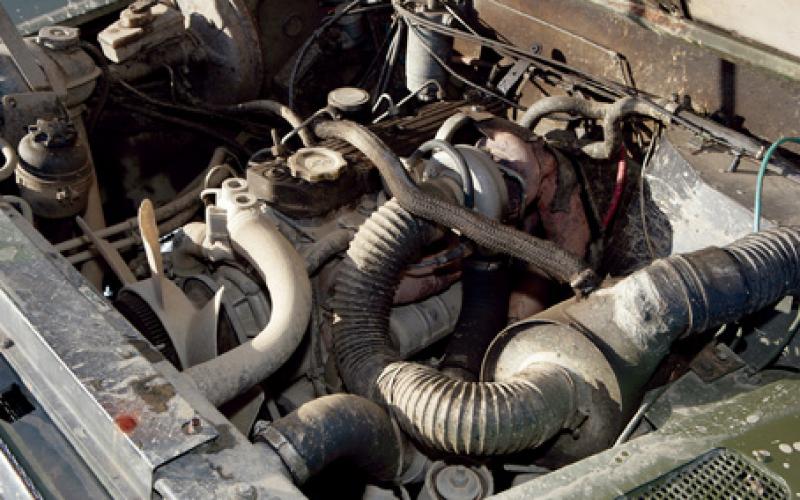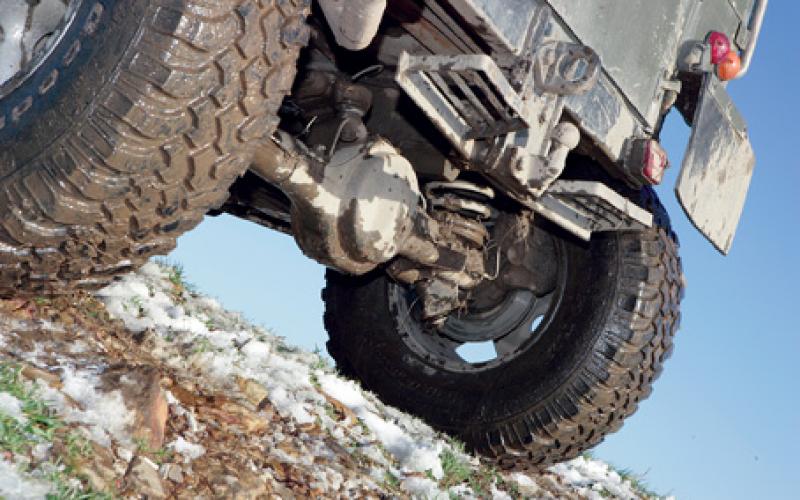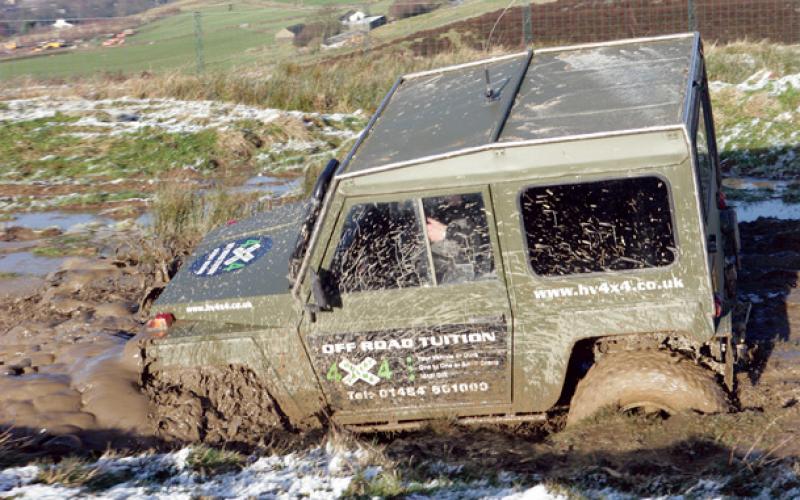The Number 1 Off-Roader
When John Foers first tested his Ibex mark one on an extreme off-road course, he was surprised by its enormous capabilities. Now that the vehicle is employed at Holme Valley 4x4 it is regularly required to make short work of challenging terrain – a job to which it is perfectly suited.
In order to teach you need to have the right tools and although this may seem an obvious fact, it is still something that is frequently overlooked; much to the detriment of productive learning. At my secondary school, pupils were encouraged to become the next Liberace by developing their skills on cheap, miniature Casio keyboards, with keys so small they could only be played by toddlers.
Consequently, Three Blind Mice was the limit of most of the class' musical proficiency. Also on the curriculum was a Technology lesson optimistically entitled ‘Motor Vehicle Studies’ in which the teacher somehow contrived to use a push-bike, remote control car and a model steam-powered road roller – in fact, anything except a motor vehicle – to demonstrate the complexities of the internal combustion engine. After nearly two years of this triple-period lesson, most of the class still couldn’t tell the difference between an exhaust pipe and a suspension arm.
Thankfully at Holme Valley 4x4 in Huddersfield, the centre understands the need to provide its pupils with the very best tools for the job, and alongside a range of Land Rovers, the company has two Ibexes for its off-road driver training. Used more by experienced drivers who have gravitated to the extreme courses than by novices, the Ibexes are among the centre’s most unique and celebrated selling points. Certainly the most capable and comfortable of the two is the Chassis 57, 2001 model, which has the advantage of a centre mounted winch system, improved clearance angles and electric front seats. However, the undisputed favourite among the centre staff, as well as a large number of customers and off-road enthusiasts, is the Ibex Chassis No.1 model – the original mark 1 vehicle.
Representing the conception of John Foers’ Ibex range, the prototype’s popularity is as much down to its unique prestige as its highly accomplished abilities. Though as you may expect from an off-roader now nearly twenty-years-old, the very first Ibex also has a rather interesting story to tell.
Due to financial constraints and ease of construction, the vehicle was originally designed and built as a pick-up truck: an identity which it has subsequently lost. Completed in 1988 in just six months, John Foers admits that he was very pleased with the end product, though it wasn’t until a year later when he became involved in Ronnie Dale’s off-road driving school that he realised the full capabilities of his creation. By this point John was attempting to develop the Ibex range by producing the second model, and he decided to keep the original vehicle for customers to test drive.
After the Ibex range was established by the production of several more vehicles, the original model was sold to Wally Miekle, who is believed to have installed the front leather seats taken from a Volvo 440. The vehicle then passed through a number of hands and was subject to several more alterations, the most significant being its conversion from a pick-up to a hard-top, performed by an unknown owner sometime in the mid-90s.
After residing in the South East for a number of years, the vehicle was then sold to an owner in Huddersfield who took the rather unusual step of kitting out the rear with huge speakers from a range-topping stereo system, along with backwards-facing seats. After spending nearly four years doubling as both an off-roader and a ghetto blaster on wheels, the vehicle was put up for sale, attracting the interest of Holme Valley 4x4 owners, Keith and Sally Barber, who were well aware of the vehicle’s off-road capabilities. Eventually they succeeded in securing the first ever Ibex for a bargain price of £5000, plus a rather old and decrepit Discovery Keith wanted rid of.
Although Keith acquired the Ibex for the purpose of providing off-road tuition he was initially reluctant to make any alterations to the layout. ‘The stereo system, which basically took up the entire rear of the vehicle, sounded so good that for I while I just used the Ibex for one-on-one instruction.’
However, as interest in the centre began to grow, Keith realised the Ibex would have to accommodate more than one passenger and set about replacing the rear-facing seats and speakers with a side-facing bench. Despite this, he still remains unhappy with the arrangement as, due to the location of the ARB compressor in the rear corner behind the bulkhead, he is prevented from fitting another bench seat. Consequently, Keith is planning to fit a forward facing seat sometime in the near future.
Other changes Keith has made are fairly minor and include respraying the bodywork from a camouflage pattern to dark green, and having each side of the vehicle sign-written with the company’s logo. ‘It’s important to keep the vehicle looking good because you always get a response with the Ibex,’ says Keith. ‘People either react by saying “What the hell is that?” or “Wow, it’s an Ibex!” When I tell people it’s the very first model they’re amazed, these vehicles are legendary.’
Maintaining the Ibex has never been particularly demanding either because as well as having been carefully looked after over the years, the vehicle is so sturdily constructed that it’s always ready to take on the challenge of the centre’s extreme off-road course.
And it is this environment, made up of steep drops, jutting boulders and sharp inclines, that the vehicle seems most suited to. ‘Although the Ibex is far more comfortable than a 90, it can spoil novices by making things too easy for them,’ says Keith. ‘It really comes into its own on our advanced ‘Adventure 4x4’ course. It can cope with anything so it’s the perfect tool for the job.’
Interior
- John Foers’ experience in designing forklift truck cabins was employed here to produce a far more spacious interior than the standard Defender 90
- In spite of the Ibex’s extra cabin width most of the trim has come directly from a 1984 Defender 90
- Volvo 440 leather seats replaced the original cloth versions
- Keith describes the Ibex’s cabin as being one of the vehicle’s defining attributes. ‘As well as preventing Land Rover elbow, it just feels really nice, like an old pair of slippers.’
Chassis
- In order to combine immense strength with a lightweight structure, John Foers opted for a lattice construction, with a top and bottom rail separated by a number of members
- Comparatively thin wall sections were used, measuring from 2.5mm to 3mm, making the frame substantial but not overly heavy
- The chassis was built using simple machinery such as a power saw and welding kit, before being hot dip galvanised to give it extra strength and stiffness. This produced a very rigid chassis, designed to enable reasonable on-road performance.
Recovery
- Built long before the Foers Vector Winching System was developed, the original Ibex didn’t even feature a winch
- A Warn 9,000lbs winch is believed to have been fitted by Wally Miekle
Tyres
- Wheel arches have been specifically constructed with plenty of clearance
- 285/75x16 BF Goodrich mud terrains were fitted by Keith as their reduced offset prevented them from rubbing against the suspension when the steering was on full lock
Body
- The Ibex’s 2400mm wheelbase is the same as a standard Defender 90, and its Solihull heritage is particularly evident in the vehicle’s roofline and A-pillar/windscreen section
- Short front and rear overhangs concentrate the vehicle’s weight between the axles, providing greater stability and larger clearance angles
- Aside from the vehicle’s wings, which are made from fibreglass, the Ibex’s main body, bonnet, door skins and radiator grille are all made of aluminum. Body panels are folded rather than pressed, making repairs simple and inexpensive. Most of the later Ibexes also follow this construction
- A unique feature on the Ibex prototype is that the doors open upwards as they’re held on gas struts in a semi-gull wing style. This design element was taken directly from a forklift truck cabin, though due to the cost of gas-struts and their finite nature, conventional side opening doors were used in all other models
Engine
- Standard Defender 200TDi unit, delivering 300lbf.ft@1950 rpm and 195bhp@4200rpm
Suspension
- Standard 90 coil sprung suspension provides a fairly smooth ride and enables a high degree of axle articulation




